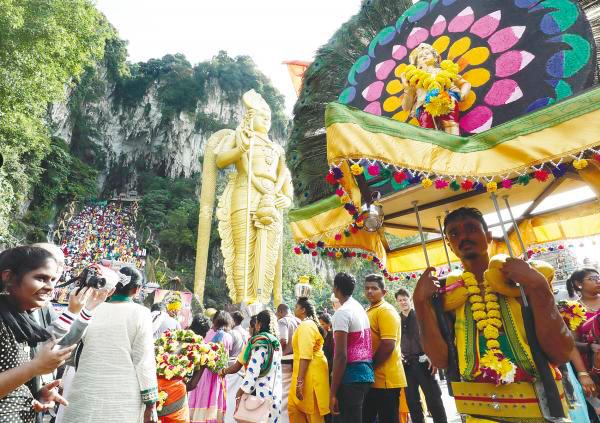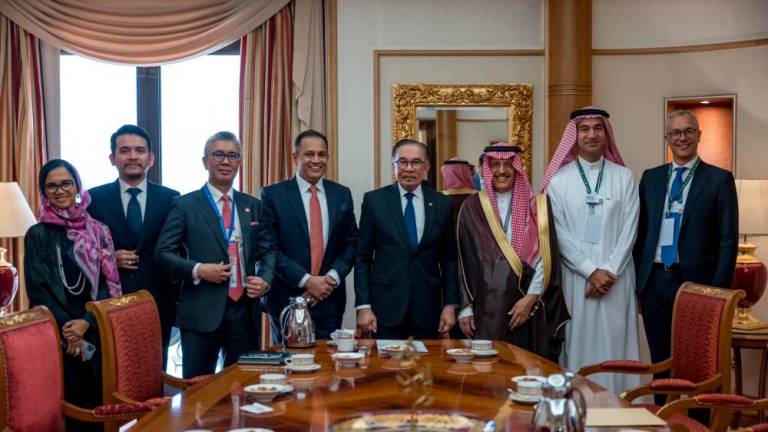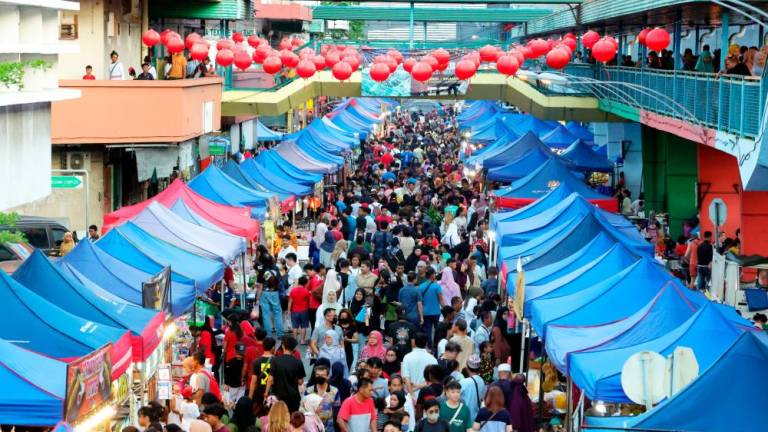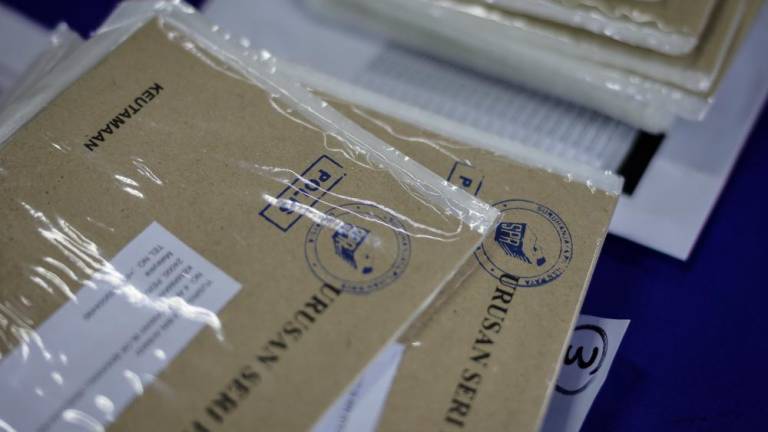AS we immerse in a myriad of festivals and celebrations, our lives are enriched by the vibrant colours of diverse traditions. It is a joy to partake in the festivities of various faiths, be they religious or secular.
Following the jubilance of Christmas, the unique Malaysian rendition of New Year unfolded, accompanied by the grandeur of Thaipusam, and next, we have the upcoming celebration in all things red, signifying prosperity.
Unlike the fervour witnessed in India, where the majority follow Hinduism, Thaipusam in Malaysia boasts a distinct charm.
I make it a tradition to go on pilgrimage to Batu Caves, paying homage to the occasion and being part of this unique festivity not found anywhere else in the world.
Braving the bustling crowd this year, I arrived at the foot of Batu Caves before 8pm. With an expected turnout of around two million visitors, the event held the promise of a vibrant spectacle, featuring a kaleidoscope of colours and a variety of engaging activities.
Not surprisingly, I saw individuals from different faiths present as spectators, joining in this annual event. People were taking pictures and videos, fully engrossed in the inimitable way the festival is celebrated and observed.
As I noticed the upgraded facilities, I could not help but think that the temple committee could have been a little more mindful of the comfort and convenience of the millions who throng the temple.
For example, the vast space near the restrooms was cluttered with construction materials, posing a potential hazard for attendees walking barefoot.
Another perennial issue is the insufficient and poorly maintained toilets, especially for those with special needs. I am not the first to voice this and I will not be the last, but unfortunately, nothing seems to change.
Considering the substantial revenue generated during Thaipusam and throughout the year, ensuring the safety, cleanliness and allure of Batu Caves should be a straightforward task, provided there is a collective will to address these concerns.
Within the caves, the crowd management left much to be desired. The disproportionate flow of people entering and exiting resulted in hundreds of devotees being stranded either at the foothill or on the steps.
In contrast to previous years, where the crowd flowed slowly but seamlessly, this year saw stagnation, with masses of people waiting in anticipation to ascend the steps, a challenging undertaking, akin to penance.
In addition, there were kavadi enduring a gruelling wait, their burdens either resting on their heads or shoulders.
Upon reflection, what if the funds generated during such festivities were redirected to enlist a specialised external task force? These professionals, trained to handle such situations, can alleviate the struggles faced by the devotees.
Relying solely on volunteers, no matter how noble their intentions may be, will often fall short due to their lack of authority to enforce, impose and instruct.
In contrast, the crowd and traffic control outside the temple premises were expertly managed by the police, who worked around the clock.
When the Hindus were praying, the non-Hindus managed the situation, and this is the beauty of Malaysia, despite talks about disunity, which dissipates.
Reflecting on a pilgrimage to Tirupati in India a decade ago – my first – where I ascended 3,550 steps over nine kilometres and seven hills, I returned with a litany of complaints that evolved into lamentations.
During that time, a wise devotee reminded me of the essence of a holy journey, to be undertaken with unwavering focus and a singular vision of fulfilling one’s desires or vows, where nothing else should matter.
I have followed the same routine annually, seeing only beauty in the people and things around me, and appreciating them as I take each step towards my focused mission.
Nevertheless, with a sense of obligation, I convey these reflections about Thaipusam, hoping they will be embraced constructively for improvement.
This sentiment resonates not only within the sacred confines of Thaipusam but also echoes in the ongoing saga of Ram Mandhir, (literally translated as Rama Temple), in Ayodhya, Uttar Pradesh, India.
Ram Mandhir is located at Ram Janmabhoomi, the site of the hypothesised birthplace of Rama, a principal deity of Hinduism.
Marking a significant milestone, the consecration of the temple took place last Monday, opening its doors to the public the next day. On the inaugural day, an astonishing 500,000 people thronged the holy abode of Rama, in prayerful devotion.
In the wake of this monumental event, the temple committee convened several meetings, diligently seeking ways to enhance the flow of devotees, aiming to make the pilgrimage experience as pleasant and comfortable as possible.
They say patience is a virtue which is expected of pilgrims, yet it is equally incumbent upon the temple committee and authorities to perpetually evolve and innovate for an enhanced devotee experience.
Ultimately, the transformative key lies in engaging the right individuals, those capable of turning Thaipusam at Batu Caves into a seamless and enchanting experience for all, ensuring that the sacred journey becomes a testament to dedication rather than a test of endurance.
Comments: letters@thesundaily.com











